In your online marketing efforts, your landing page is often an essential component of conversion. Small errors can, however, be devastating and reduce its efficiency.
Did you know that poorly optimized landing pages are responsible for 44% of lost conversions? Let’s ensure your page doesn’t fall into that trap.
In this article, we will cover the most common landing page mistakes and some quick fixes that could help you boost conversion.
- No Clear Call-to-Action (CTA)
Not having a clear and compelling call to action is one of the common landing page mistakes. With a clear or even no CTA, people have confidence about what they should do, and so they exit your page.
How To Fix It:
- Use Short And Action Based Words, Divide your call to action (CTA) into short and actionable words; this is how your CTA will look: “Sign Up Now,” “Get Started,” “Download Free Guide”.
- Ensure the primary CTA is above the fold.
- Employ contrasting colors to capture your visitor’s attention.
- They should not bombard visitors, so do not put too many CTAs.
A thoughtfully designed and strategically positioned call-to-action (CTA) can usher users effortlessly toward your intended goal.
- Messy or Overwhelming Design
Confusion, your visitors won’t find your message when there is clutter on the landing page. Getting the users to focus on the main aim of the page is difficult when there are too many images, text blocks, or buttons on the page.
How to Fix it:
- Minimal design, remove everything unnecessary
- Design it so that it uses a lot of white space and is simple to use.
- It must be consistent to your brand and text messages.
- Have only one focus or offer on each landing page to prevent cognitive overload.
Implement the less is more approach in order to design converting landing pages.
- Too Slow to Load
Web visitors in this fast-moving internet never want to wait for a page to load. A landing page that takes forever to load frustrates visitors and makes them skip ahead before diving into your content.
How to Fix That:
- Be sure to compress images as small as they can be without a loss of quality.
- It needs a good hosting provider to perform at its best.
- Minimize heavy scripts or unused plugins.
- Leverage browser caching to speed up page loads for returning users.
For example, Pages that load within 2 seconds have a 15% higher conversion rate than those that take 5 seconds or more.
Use tools such as Google PageSpeed Insights to gauge and improve the speed of your landing page. A faster page will keep more visitors around long enough to convert.
- Unclear Value Proposition
The landing page of your product should state your value proposition immediately. If someone visits and doesn’t understand the value you offer, the likelihood of visitors taking no action is significantly increased.
How to Fix It:
- A great headline that draws attention and states directly what you are providing.
- Also include any subheading/short paragraph further explaining the benefits of your product or service.
- Expand on every feature and benefits, use bullets.
To do that, your value proposition has to resonate with the pain points of the target audience and show how you are uniquely able to solve the problem.
- Poor mobile optimization
Since most of the web traffic is from mobile, having a landing page that does not accommodate mobile users is very unfortunate. A poor mobile experience could mean high bounce rates and conversions.
How to Fix It:
- Implement responsive design so your website can respond at different screen sizes.
- Minimize the size of fonts, button size, and form size (filling in for a touchscreen, for the best user experience).
- Make sure your landing page is tested on several devices for a smooth and seamless experience.
- Mobile users want exactly that so your page should have short direct, crisp content.
A mobile-friendly landing page prevents you from losing precious conversion by on-the-go users.
Bonus Tips for Success
Personalization: Tailor your landing pages to different audience segments for higher relevance and engagement.
A/B Testing: Experiment with different elements, such as headlines, images, and CTAs, to identify what resonates most with your audience.
Performance Metrics: Monitor bounce rates, conversion rates, and time on page to uncover optimization opportunities.
Conclusion
Landing pages are a powerful conversion tool, but small mistakes can have a big impact. The following five landing page mistakes– no clear CTA, cluttered design, slow loading speed, unclear value proposition, and weak mobile optimization can be addressed to improve your results dramatically.
Spend some time analyzing your landing page and make adjustments for these items today. So even though optimizing your landing page will also be about aesthetics, it actually also means designing a seamless, compelling and user-friendly experience for visitors who are going to be long-term customers. As a result, if you focus on those areas, you will convert your landing page into a conversion powerhouse.






